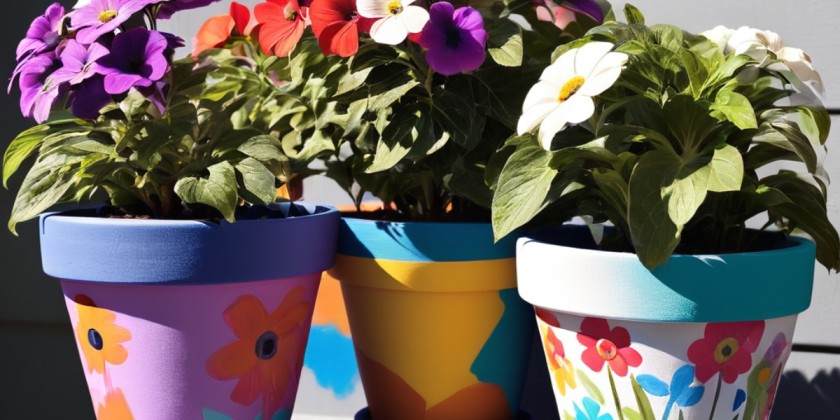The Pink Princess Philodendron (Philodendron erubescens’ Pink Princess’) is a coveted and stunning plant, often topping the wish lists of plant enthusiasts. It stands out with its heart-shaped, deep green leaves adorned with vibrant bubblegum pink variegation, making it a true rarity in the world of plants. While it may be mistaken for the Philodendron Pink Congo, the spectrum in the Pink Princess is entirely natural, arising from inherent processes. In contrast, the Pink Congo’s variegation is artificially induced by injecting chemicals into the leaves and typically reverts to green within a couple of months after purchase.
The Pink Princess Philodendron is already a rare and coveted plant, but it boasts several intriguing variants, each distinguished by its unique leaf colours and patterns.
How to Grow Pink Princess Philodendron
‘Sparkle’ Pink Princess: Among the most well-known Pink Princess types, the Sparkle Pink Princess Philodendron features leaves adorned with enchanting pink and green stripes. In some instances, the plant exhibits an almost equal distribution of pink and green, creating a captivating visual contrast.
‘Marble Variegation’ Pink Princess: The ‘Marble Variegation’ variety showcases foliage speckled with pink and white splotches, creating a marbled effect. This rare, distinctive marbling pattern makes these plants highly sought after by collectors.
‘Black Cherry’ Pink Princess: A relatively new addition to the Pink Princess family, the ‘Black Cherry’ variety boasts deep red leaves reminiscent of luscious cherries. The leaves are heart-shaped and feature a glossy, waxy coating, making this variant a captivating and unique option.
‘White Knight’ Pink Philodendron: The ‘White Knight’ Pink Philodendron results from a cross between a Pink Princess and a White Knight variety. It inherits the Pink Princess’s leaf shape and colour patterns, creating an intriguing fusion of these two distinctive plants.
Pink Princess Philodendron Care
Light: Pink Princess Philodendrons are known for their striking foliage but can be sensitive to direct sunlight, which may lead to leaf burn. However, they require ample light to sustain their vivid variegation. Give them at least six hours of bright, indirect, or filtered light. Placing them near an east or west-facing window is typically the best location. Investing in a grow light can help meet their light requirements if your indoor environment lacks sufficient natural light. Finding the right balance is important because too little light can cause the leaves to turn green, while excessive light may fade the pink variegation.
Soil: Pink Princess Philodendrons thrive in organically rich and well-draining soil. Given that they belong to the aroid family, they prefer soil that is high in organic matter and provides proper aeration. A suitable potting mix can be created by combining one part of standard potting soil, one part perlite, and one part orchid bark. This composition offers essential nutrients while ensuring adequate drainage.
Water: Proper watering is essential for Pink Princess Philodendrons. They prefer slightly damp soil, but overwatering can lead to root rot. Allow the top half of the ground to dry out between waterings. When you water, ensure that excess water drains well from the pot, preventing waterlogging. It’s generally safer to err on the side of underwatering rather than overwatering, as these plants are more resilient in drier conditions. Adapt your watering routine to your local climate and indoor humidity levels, as the plant will benefit from a warm and humid environment.
Also Read: 18 Indoor Plants with Big Leaves
Temperature and Humidity
Pink Princess Philodendrons generally do well in typical household temperature and humidity levels. However, they thrive in warmer, more humid conditions. These plants are sensitive to extreme heat, so it’s essential (65 and 79 degrees Fahrenheit). Avoid exposing them to temperatures below 60 degrees Fahrenheit (15 degrees Celsius) to prevent stress and potential damage.
Fertilizer
To promote the growth of your Pink Princess Philodendron, provide it with monthly feedings of a balanced liquid fertilizer throughout the active growing season in spring and summer. However, discontinue fertilization as your plant enters its dormant period in early autumn. Opt for a high-quality liquid foliage houseplant fertilizer, which often contains essential micronutrients like calcium and magnesium to maintain the plant’s health and support its growth. This strategy is especially beneficial for this slow-growing species.
Propagating
Propagating a Pink Princess Philodendron through stem cuttings is a straightforward and rewarding process that allows you to create new plants, encourages bushier growth, and helps maintain variegation. Follow these steps to successfully propagate your Pink Princess
Philodendron
Select the Cutting: Identify where you’ll make the stem cutting. Aim for a segment with 2 to 3 leaves and 2 to 3 exposed nodes at the base.
Cutting and Preparation: Using sharp, sterilized pruning shears or scissors, carefully cut the selected stem to separate it from the parent plant.
Trim Leaves: Remove the lower leaves from the cutting, leaving only 2 to 3 leaves at the top. Callous Formation: Allow the cut end of the stem to air dry and cure by placing it in a dry location for 12 to 24 hours. This helps prevent rotting.
Water Propagation: After the callus has formed, place the cutting in a water container, ensuring that the submerged portion includes the exposed nodes. Position the container in an area with bright, indirect light.
Root Development: Within 2 to 3 weeks, you should observe the emergence of new roots from the cutting. Once these roots have reached a length of at least 1 inch, your cutting is ready for the next step.
Transplant: Gently transfer the rooted cutting into a well-draining potting mix in a separate pot. Ensure the soil is slightly damp, and water thoroughly after planting.
Common Problems
Pink Princess Philodendrons, when cared for properly, are generally trouble-free. However, issues with these tropical plants often stem from inadequate watering, humidity levels, or improper lighting conditions.
Browning Edges: The Browning border of the leaves of a Pink Princess Philodendron typically occurs due to insufficient humidity. The leaves may dry out and develop brown edges when the air is too dry. Unfortunately, once this damage has occurred, it cannot be reversed. However, increasing the humidity near the plant can prevent further browning and maintain leaf health.
Browning Variegation: Brown spots on the delicate pink variegation of the leaves are an unwelcome sight. This browning often results from exposure to harsh lighting conditions, which can cause the sensitive pink areas to burn. As discussed earlier, these burn spots can also manifest due to inadequate humidity. To prevent this issue, placing your Pink Princess Philodendron in an environment with appropriate lighting and humidity levels is crucial, ensuring that the stunning variegation remains intact and vibrant.
FAQS
1. What should I do if my Pink Princess Philodendron’s leaves have brown edges?
If the leaves have brown edges, it’s likely due to low humidity. Unfortunately, you can’t change the damage, but you can contain further browning by improving humidity around the plant.
2. How do I maintain the proper humidity for my Pink Princess Philodendron?
To preserve proper humidity, you can mist the plant regularly, position a humidity tray nearby, use a room humidifier, or group plants together to complete a microclimate with more elevated humidity.
3. What’s the best lighting for Pink Princess Philodendrons to avoid burning or variegation issues?
Pink Princess Philodendrons choose bright, indirect light. Sidestep natural sunlight, as it can cause scorching. Supplying the right light is essential to maintaining the plant’s spectrum.
4. Can I resurrect a Pink Princess Philodendron with brown variegation or edges?
Unfortunately, once the damage is done, it cannot be switched. Focus on enhancing care conditions to contain further problems and stimulate healthy new growth.
5. Are there other common issues I should watch out for with Pink Princess Philodendrons?
Yes, be mindful of overwatering, which can direct to root rot. Guarantee that the plant’s soil is well-draining and permit the top half of the earth to parch out between waterings. Further, watch for pests like spider mites, mealybugs, and aphids and treat them promptly.
6. How can I increase humidity for my Pink Princess Philodendron if I live in a dry climate?
In dry climates, you can use a room humidifier, complete a humidity tray with dampness and pebbles, or jointly group your plants to raise humidity levels. Routine misting can also aid in improving local humidity.











